Psych 101 M9E
pdf
keyboard_arrow_up
School
Portage Learning *
*We aren’t endorsed by this school
Course
101
Subject
Psychology
Date
Jan 9, 2024
Type
Pages
17
Uploaded by BarristerEnergy12730
1.
What is your reaction to watching the video on a psychotic episode in a person with
schizophrenia? How does what you saw and heard compare with your thoughts about
this disorder prior to watching the video?
2.
An individual diagnosed with Schizophrenia abruptly starts rhyming entire conversations.
What symptom is he presenting with?
a.
Clang associations
3.
Today, ECT is primarily used to treat severe
a.
Depression
4.
This personality disorder is characterized by extreme emotional impulsivity:
a.
Borderline PD
5.
True or false? A parent should get his child checked for autistic spectrum disorder if his
infant doesn’t respond with a smile by 3 months old.
a.
False
6.
Describe in detail the negative health consequences of Anorexia Nervosa
a.
Anorexia Nervosa can lead to severe health consequences, including
malnutrition, cardiovascular problems, bone density loss, hormonal imbalances,
neurological issues, and even death if left untreated.
7.
Eating disorder characterized by obsession with food and weight and possible purging
behaviors. It often coexists with depression and anxiety disorders
a.
Bulimia nervosa
8.
[answer1] are false sensory experiences.
a.
Hallucinations
9.
Name two symptoms of mania.
a.
Elevated mood and increased energy
10. True or false? Someone with Bipolar Disorder can be depressed for months
a.
True
11. Describe social anxiety disorder. What are its core features? What do people with this
disorder fear the most?
a.
Someone is extremely afraid of social situations because they worry that
others will judge them negatively or make fun of them. People with this
disorder fear embarrassment and try to avoid these situations, even
though it can disrupt their lives
12. [answer1] is a disorder in which someone becomes obsessed with a perceived physical
defect on his or her body.
a.
Body dysmorphic disorder
13. Compare and contrast Anorexia Nervosa and Bulimia Nervosa in detail. In your answer,
be sure to compare and contrast the disorders in terms of: 1. core features 2. causes 3.
age of onset 4. who is most likely to develop these disorders 5. treatment
Core Features:
●
Anorexia: Severe calorie restriction, low body weight, and fear of gaining
weight.
●
Bulimia: Binge eating followed by compensatory behaviors (e.g., vomiting).
Causes:
●
Both have genetic and environmental factors, but anorexia is often linked
to control issues and perfectionism, while bulimia is associated with
emotional triggers and a history of dieting.
Age of Onset:
●
Anorexia usually starts in adolescence or early adulthood, while bulimia
often begins in late adolescence or early adulthood.
Who Is Most Likely to Develop These Disorders:
●
Both can affect males and females, with a family history of eating
disorders being a risk factor for both.
Treatment:
●
Anorexia treatment includes medical stabilization, nutritional
rehabilitation, and psychotherapy.
●
Bulimia treatment focuses on psychotherapy, medication for mood
disorders, and nutritional counseling.
What do clinical psychologists study?
How do clinical psychologists differ from psychiatrists?
Mental disorders and the treatment of mental disorders.
The main difference between clinical psychologists and psychiatrists is that psychiatrists
are medical doctors who can prescribe medication, while clinical psychologists cannot.
A. What is the basic problem in depressive disorders?
B. How long must someone experience a depressed mood before being diagnosed with
with major depressive disorder?
A. Depressed mood.
B. Two weeks.
What are the two “poles” of bipolar disorder?
Mania and depression.
What is the gender difference in depression rates? Using the bio-psycho-social model,
describe some of the reasons for the gender difference in depression rates.
Gender difference: women are twice as likely to be diagnosed with depression as men.
Reasons: Bio: hormonal differences; psychological: rumination; social: differences in
levels of stress
What is the difference between mania and hypomania?
Mania will be indicated by high energy, racing thoughts, and potentially psychosis.
Hypomania is less extreme and does not have false sensations / ideas.
What do think it is like to experience a bipolar disorder?
Experiencing bipolar disorder typically involves fluctuating between high energy and
extreme sadness. Positives may include increased creativity and energy during manic
phases. However, these highs can lead to risky behaviors and relationship strains.
Depressive phases often bring overwhelming sadness and lethargy, greatly impacting
daily life. This disorder requires ongoing management for stability.
What is panic disorder?
Recurrent and unexpected panic attacks.
Define phobia.
Persistent, irrational fear
How can clinicians distinguish between the normal fears people have about
performance situations and social anxiety?
Clinicians distinguish between normal performance fears and social anxiety by the
intensity and impact of the fear. In social anxiety, the fear is excessive and persistent,
leading to significant distress and avoidance of social situations. It often interferes with
daily functioning and relationships, going beyond the usual nervousness experienced in
performance settings
Your preview ends here
Eager to read complete document? Join bartleby learn and gain access to the full version
- Access to all documents
- Unlimited textbook solutions
- 24/7 expert homework help
What is the difference between obsessions and compulsions?
Obsessions are repetitive unwanted thoughts, whereas compulsion are repetitive
unwanted behaviors that someone does in response to the thoughts.
What do the “related disorders” in the Obsessive-Compulsive Disorder and Related
Disorders category have in common?
they all involve compulsive behaviors. Many of them also include obsessive thoughts
that are tied to the compulsive behaviors.
How might you respond to someone who jokingly describes themselves as “so OCD”?
I might respond by saying that OCD is a serious mental health issue, not just about
being neat or organized. It's important to understand the real challenges faced by those
with OCD.
A. Describe dissociative identity disorder.
B. What is one explanation of what DID exactly is?
A. Dissociative Identity Disorder (DID) involves multiple distinct personality states or
identities within one person.
B. DID may develop as a coping mechanism to deal with severe trauma, allowing the
individual to detach from traumatic experiences.
What is a trauma?
A frightening event that you experience or witness.
A. What are the symptoms of PTSD?
B. What are some factors that may make someone more likely to develop PTSD?
A. PTSD symptoms fall under four clusters: Re-experiencing the traumatic event,
avoidance of reminders of the event, negatively changed mood and cognitions as a
result of the event, and hyperarousal symptoms.
B. Risk factors include prior childhood trauma, family history of PTSD, personal history
of abuse, history of depression and anxiety, lack of support
What is schizophrena? What are typical categories of symptoms?
Schizophrenia is a mental disorder characterized by distorted thinking, emotions, and
perceptions. Typical categories of symptoms include positive symptoms (hallucinations,
delusions), negative symptoms (lack of emotion, motivation), and cognitive symptoms
(disorganized thinking, trouble focusing).
How does the diathesis-stress model help us understand schizophrenia?
There is a genetic predisposition or risk for developing schizophrenia, but it will only
develop if sufficient environmental stressors are in place.
Sometimes people confuse the diagnoses of schizophrenia and dissociative identity
disorder. What would you highlight as key differences?
Dissociative identity disorder is a break in personality, schizophrenia is a break from
typical sensory and processing experiences.
What is narcissistic personality disorder?
An individual is obsessed with herself and has an exaggerated sense of her own
importance.
What are some of the key symptoms of autism spectrum disorder?
difficulties with social communication and interaction, repetitive behaviors or restricted
interests, sensory sensitivities, and challenges in understanding and responding to
social cues.
List some key symptoms of ADHD.
Difficulty paying attention, difficulty keeping still, talkativeness, problems following
through on tasks, hyperactivity, impulsivity
What domains are considered when assessing the adaptive functioning of someone
with intellectual disability?
Social, language, conceptual, independence, school/work functioning.
What are the differences between overeating and binge-eating disorder?
Overeating is occasional excessive food consumption, while binge-eating disorder is a
diagnosed condition with recurring episodes of uncontrollable overeating.
Compare and contrast anorexia nervosa and bulimia nervosa.
Anorexia nervosa involves extreme food restriction and low body weight, while bulimia
nervosa is characterized by binge eating followed by purging behaviors to prevent
weight gain.
What therapies are used to treat affective disorders?
Therapies for affective disorders include CBT, IPT, medication, ECT, psychoeducation,
and lifestyle changes.
Compare and contrast cognitive-behavioral therapy with humanistic therapy.
Cognitive-behavioral therapy targets one’s thoughts and feelings but also targets the
behaviors that promote mental disorders.
Humanistic therapy is where individuals can choose to get well and that they simply
need to be encouraged by therapists to reach their potential.
How do antidepressants treat depression?
by regulating neurotransmitters in the brain, such as serotonin and norepinephrine,
which play a role in mood regulation. They increase the levels of these
neurotransmitters, leading to improved mood and reduced depressive symptoms.
What therapies are used to treat anxiety disorders?
Therapies used to treat anxiety disorders include cognitive-behavioral therapy (CBT),
exposure therapy, medications, relaxation techniques, psychotherapy, biofeedback, and
group therapy. The choice of therapy depends on the type and severity of the anxiety
disorder.
Depressive Disorders and Bipolar Disorders
●
Clinical psychologists study and treat mental disorders
○
Psychiatrists as well
○
Medically trained and tend to take a different approach than
psychologists
●
React to what is known as medical student syndrome
○
You think that you or others that you know have the various disorders
●
Diagnostic and Statistical Manual of Mental Disorders DSM-5
●
Depressive Disorders
○
Disorders in which individuals persistently experience sadness plus a
variety of physical, cognitive, and emotional symptoms that interfere
with everyday life functioning
○
Prevalent in high-income countries
○
Major Depressive Disorder
Your preview ends here
Eager to read complete document? Join bartleby learn and gain access to the full version
- Access to all documents
- Unlimited textbook solutions
- 24/7 expert homework help
■
Requires individuals to have a major depressive episode for at
least two weeks
●
Occurs most of the day, nearly every day throughout this
period
■
Includes at least five of the nine symptoms
●
Depressed mood.irritability
●
Decreased interest.pleasure in activities
○
Anhedonia
●
Changes in eating behaviors
●
Changes in sleep patterns
●
Changes in activity levels
○
Psychomotor agitation or retardation
●
fatigue
●
Feelings of guilt
●
Problems concentrating and making decisions
●
Suicidal thoughts
○
Can range from mild to moderate to severe
■
Women twice as likely as men
●
Possible explanations
○
Hormonal changes
■
Postpartum, perimenopause, and menopause
○
Women likely to dwell on their problems
■
Ruminations makes them more upset over
time
○
Women lead stressful lives, and stress can
trigger mental disorders
○
Women likely to seek help for depression
○
Additional depressive disorders include depressive disorder,
disruptive mood dysregulation disorder, and premenstrual dysphoric
disorder
○
Depressive disorders are caused by a mix of biological, social, and
cognitive issues
■
Some individuals may be biologically predisposed to
depressive disorders
■
Predisposing factors include
•
Genetics, structural differences in the
brain, and chemical irregularities
■
What sets off these factors may be social events in the
individuals life like relationship changes, stress, or trauma
■
Bipolar Disorder and Related Disorders
●
Those with bipolar disorders experience two poles
○
Depression and mania
●
Depressive symptoms match those of depressive disorders, but
bipolar disorders, mania is an additional feature
●
Mania
○
Excessive excitement and elation
○
Far more extreme than simply feeling very happy
○
People often feel supremely confident
○
Last for about a week in order to be diagnosed
○
Individual comes down from this high and enters a
depressive phase
○
Different diagnostic subtypes exists to differentiate between very
different experiences of bipolar disorder
○
Full manic episode
■
Feeling of euphoria
■
Inflated self-esteem
■
Risky behaviors
■
Racing thoughts
■
Talking very rapidly
■
Decreased need for sleep
■
Very goal-directed behaviors and increased activities
overall
■
Distractibility
○
Hypomania
■
Less severe for
●
Men and women seem to experience the same rates of Bipolar Disorders
○
Some may experience psychosis, or break with reality
●
Bipolar disorders have a strong genetic component and may run
in families
○
Treatment leans toward medical interventions, and lithium and
Antidepressants
Anxiety Disorders and Obsessive-Compulsive and
Related Disorders
●
Anxiety Disorders
○
Most commonly diagnosed disorder in DSM
○
Characterized by anxiety
○
Panic Disorder
■
Individual has panic attacks, in which waves of panic come
with little to no warning
■
Some become afraid to go out in public for the fear of having an
attack
■
Agoraphobia
●
Fear of public places
■
Women more likely to have
○
Common for people with anxiety or mood disorders to also experience
■
panic attacks on top of other symptoms
■
Specific Phobias
●
A phobia is a persistent and irrational fear of something
○
Someone cannot shake the fear and it disrupts their
life
○
Irrational since no harm will come to the person
●
Common phobias
○
Fear of height/acrophobia
○
Fear of closed spaces/claustrophobia
○
Fear of blood/hemophobia
○
Fear of flying/aerophobia
■
Social Anxiety Disorders
●
Excessive fears about social situations
●
Particularly afraid of being seen doing something
embarrassing
■
Anxiety disorders are caused by a mix of biological and
environmental causes, ranging from neurochemical, genetic, and
structural differences in the brain to traumatic and stressful
experiences early in life
■
Drug and psychotherapy interventions
●
Antianxiety and antidepressant drugs
●
Anxiety and mood symptoms often overlap
●
Psychotherapy treatment focus on relaxation techniques
to relieve anxiety
●
Exposure to the feared events and issue for treatment of
phobias
●
Obsessive Compulsive DIsorder OCD
○
Characterized by persistent, unwanted thoughts and behaviors
○
Thoughts and impulses that pop into their head
■
Obsessions
○
Compulsions
■
Behaviors performed in response to the obsessions
○
Extremely debilitating condition
○
Related disorders
■
Body dysmorphic disorder
●
Individual becomes obsessed with what they perceive to
be an abnormal feature or defect in their body
■
Hoarding disorder
Your preview ends here
Eager to read complete document? Join bartleby learn and gain access to the full version
- Access to all documents
- Unlimited textbook solutions
- 24/7 expert homework help
■
Trichotillomania
●
Hair pulling
■
Excoriation
●
Skin picking
Dissociative Disorders and Trauma- and Stressor
Related Disorders
●
Dissociative Disorders
○
A person's personality becomes fragmented or detached in some way
○
Dissociative Identity Disorder DID
■
Most famous type
■
Multiple personality disorder
■
NOT Schizo
■
Various personalities take turns holding the person's
consciousness or awareness
●
Some may be aware of one other, but others may not be
■
First highly publicized DID case
●
Eve White
○
Sought therapy for her headaches and blackouts
○
Told therapists she had been hearing voices
○
One session she introduced herself as Eve Black
■
Gestures, voice, and mannerisms
were different
○
As many as 21 alternate personalities, or alters
○
Almost exclusively, DID has been experience by women, many
sexually abused
○
Some explanations
■
Fractured ego is trying too hard to keep unwanted thoughts
from becoming conscious
○
Individual has learned to behave according to various personalities
■
Personalities are learned behaviors that can be unlearned
○
Individuals are frauds, merely calling attention to themselves
■
Trauma and Stressor Related Disorders
●
Brought on by a stressor, or an environmental stimulus that is
experienced directly, witnessed, or experienced indirectly
●
After traumatic events, a certain portion of individuals experiencing the
event will display PTSD symptoms
●
Number of predictors have been identified to describe who is likely
to experience these symptoms
○
Prior history of trauma
■
Rape, assault, abuse, domestic violence
○
Prior exposure to life-threatening situations
○
Prior significant illness
●
People can develop PTSO without directly experiencing a traumatic event
Schizophrenia Spectrum Disorders and Personality
Disorders
●
Schizophrenia
○
Split mind
○
Not the personality that is split, but the mind or thought patterns
○
A psychotic disorder involving distortions in thoughts, perceptions,
or emotions
●
Psychotic
○
Losing touch with reality
●
Schizophrenia Spectrum
○
Long held view that Schizo is a conglomeration of a variety of
psychotic conditions rather than a unified disorder
○
Huge amount of variety in types of symptoms that various people with
Schizo experience
■
Have debilitating symptoms that they cannot engage in their
own self care
○
Not all people experience hallucinations
●
Some people show symptoms primarily in one of these categorizes
○
Positive symptoms are schizophrenic symptoms that are added to
an individual
■
Involve behaviors and experiences that persons without schizo do
not have
■
Delusions
●
False beliefs, such as the belief that one was abducted
by aliens
■
Hallucinations
●
False sensory experiences, such as hearing voices
from people who are not there
●
Can involve any sense, although auditory are most common
○
Negative symptoms involve deficits
■
Reflect an absence of something
○
People with schizo may have a lack of interest in
pleasurable activities
○
Flat affect, or absolute lack of discernible emotion on their faces
○
Poverty of speech, such as being unresponsive when
someone tries to talk to them
●
Disorganized symptoms include a variety of bizarre behaviors, such as
barking like a dog or engaging in disorganized speech
○
Clang associations
■
Involve the individual choosing words to say based on
the sound of the words rather than the meaning
■
Catatonia
■
Many experience severe cognitive problems
●
May be unable to keep a job or meaningful relationship because of
problems with memory, attention, judgement, problem-solving, and
self- care
■
Current theories emphasize that both environmental and biological components
contribute
●
Genetics strongly predispose individuals
●
Having a parent with Schizo makes it 14 times more likely that
the child will also have Schizo
○
Does not automatically mean the child will develop, unless
the
person experiences something the he perceives to be very stressful
■
May not develop Schizo at all
●
Genetics and abnormalities in the brain's use of dopamine
○
Two underlying biological contributors
○
Are not believed to cause the disorder by themselves
○
An environmental trigger is also needed to set off the disorder
■
Diathesis-Stress Hypothesis
●
Schizo is caused by genetic vulnerability coupled with
environmental and psychosocial stressors
■
Personality Disorders
●
Involve long-standing patterns of behavior, thoughts, and emotions
that greatly deviate from societal norms, are present from
adolescence or early adulthood, are extremely persistent, and lead
to distress and impairment
●
Biological contributions are often difficult to discern
●
Narcissistic Personality Disorder
○
Obsessed with temself
●
Borderline Personality Disorder
○
Extreme emotional impulsivity
●
Antisocial Personality disorder
Your preview ends here
Eager to read complete document? Join bartleby learn and gain access to the full version
- Access to all documents
- Unlimited textbook solutions
- 24/7 expert homework help
○
Lack of conscience and concern for others
Neurodevelopmental and Feeding and Eating Disorders
●
Neurodevelopmental Disorders
○
Disorders that are present early in life and stem from problems with
neural development
■
Normal growth of neurons in the brain
■
Can arise due to physical trauma to the brain, exposure to
infectious diseases, toxins, nutritional issues prenatally, or
genetics
○
Autism Spectrum Disorder
■
Two primary components
●
Deficits in social communication and social interaction
●
Restricted repetitive behaviors, interests, and activities
○
Attention Deficit/Hyperactivity Disorder
■
Show some combination of issues with paying attention,
impulsive behavior, and hyperactivity
■
Developmental appropriateness
●
Family seeking diagnosis should first look at examples of
appropriate behavior across the lifespan to gauge
whether the symptoms of ADHD or simply acting their age
○
Intellectual Disability
■
Lower than average IQ and also have deficits in
adaptive functioning
■
Domains include communication, social skills, conceptual skills,
independence, and school/work functioning
●
Feeding and Eating Disorders
○
Typically begin between adolescence and early adulthood
○
Considered to be mental disorders due to significant psychological
factors predicting the onset and continuance of these behaviors
■
Example
●
Binging behaviors
○
Significant stress, impairment, and possibly
compensatory behaviors that somewith with an
eating disorder may engage in may translate into
severe medical problems
●
Anorexia Nervosa
○
Fatal if left untreated
○
Two types of Anorexia Nervosa
■
Subtype 1
●
Restricting type
●
Individual does not engage in either binge eating or
purging behavior
○
Instead, weight loss occurs due to diet and exercise
■
Subtype 2
●
Binge eating and Purging Type
●
Individual does engage in binge eating and
purging behaviors
○
This is still anorexia
■
Includes significantly low body weight
■
Dangerously low body mass index
Psychotherapy
●
Two major types of treatments
○
Psychotherapy
■
Involves seeing a psychologist to talk about the problem and
treat the disorder using specific therapy techniques
○
Drug therapy
●
Giving medication
■
Affective Disorders are often treated with either
○
Psychotherapy
■
Common type that is used to treat Depression is Cognitive therapy
●
Targets the inaccurate thoughts that someone might have
●
Example
○
Depression in where a woman feels worthless and
think it's impossible for anyone to love her
○
Therapy would target these thoughts and show her
that it is
unreasonable to think that no one will love her
■
Cognitive-Behavioral Therapy
●
Pairs Cognitive and Behavioral therapy
○
Behavioral therapy targets the learned behaviors
that are associated with a disorder
●
Treatment for Depression
○
Targeting the woman's feelings of worthlessness and
talking about these issues
○
Targeting the woman's behaviors that promote
depression,
such as avoiding other people and isolating herself
●
Cognitive-Behavioral therapist would give the woman
homework assignments
○
Things that should would have to do at home to
overcome
these learned behaviors
○
Example
■
Tell her to call a friend during the week and
then talk about this experience in the next
therapy session
○
Drug Therapy
■
Frequently used to treat Affective Disorders
○
Antidepressants
Your preview ends here
Eager to read complete document? Join bartleby learn and gain access to the full version
- Access to all documents
- Unlimited textbook solutions
- 24/7 expert homework help
■
Drugs used to treat the chemical imbalance that might be present
in some depressed individuals
■
Targets neurotransmitters
■
Thought to increase availability of dopamine or serotonin or
other neurotransmitters in order to elevate mood
○
Anxiety Disorders may also be treated using Drugs
■
Antidepressants and anti-anxiety medications
●
Anti anxiety has more severe side effects than
most antidepressant and may overly-sedate people
■
Psychotherapy is another option for anxiety
●
Electroconvulsive therapy ECT
○
Used to treat extreme depression
○
High voltage shocks elicit a seizure that may affect the brain and
offer individuals a reprieve from depression
●
Behavioral Therapy
○
Success in treating phobias and other anxiety conditions
○
Individuals must confront their fears either by imagining them or
actually experiencing a mild form of these features
■
Known as aversive or exposure therapy
●
Schizo can be treated using medication and psychotherapy
○
Antipsychotic medication
○
Cognitive-behavioral therapy
●
Drug therapy generally works quicker
●
Combining drug and psychotherapy is effective, such as in treatments of
affective disorder
●
Other Psychotherapies
○
Psychodynamic therapies
■
Psychoanalysis
■
Modern day psychodynamic therapies focus on inner conflict
and interpersonal relationships
○
Humanistic Therapies
■
Emphasize that individuals can choose to get well and that they
simply need to be encouraged by therapists to reach their
potential
○
Group therapies, family therapy, marital counseling
■
Involve more than one person coming in to see the therapist
●
Misconceptions
○
Three Main
■
Drug therapy is a more successful treatment than
Psychotherapy for Depression
●
Equal effectiveness
●
Prescription drug coverage is more available
●
Availability issue
■
Drug treatment only affects neurotransmitter levels
●
Still research on what is happening at a synaptic level
■
Drug treatments are safe and effective for all ages
●
Concerns with certain populations such as the young old
●
Unknown if equally safe for all genders, race, and age
●
Not too much studies with particular populations
●
Comorbidity
Related Documents
Recommended textbooks for you

Ciccarelli: Psychology_5 (5th Edition)
Psychology
ISBN:9780134477961
Author:Saundra K. Ciccarelli, J. Noland White
Publisher:PEARSON
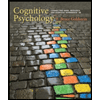
Cognitive Psychology
Psychology
ISBN:9781337408271
Author:Goldstein, E. Bruce.
Publisher:Cengage Learning,
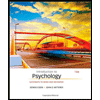
Introduction to Psychology: Gateways to Mind and ...
Psychology
ISBN:9781337565691
Author:Dennis Coon, John O. Mitterer, Tanya S. Martini
Publisher:Cengage Learning
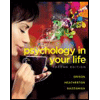
Psychology in Your Life (Second Edition)
Psychology
ISBN:9780393265156
Author:Sarah Grison, Michael Gazzaniga
Publisher:W. W. Norton & Company
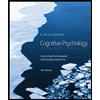
Cognitive Psychology: Connecting Mind, Research a...
Psychology
ISBN:9781285763880
Author:E. Bruce Goldstein
Publisher:Cengage Learning
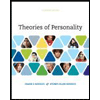
Theories of Personality (MindTap Course List)
Psychology
ISBN:9781305652958
Author:Duane P. Schultz, Sydney Ellen Schultz
Publisher:Cengage Learning
Recommended textbooks for you
 Ciccarelli: Psychology_5 (5th Edition)PsychologyISBN:9780134477961Author:Saundra K. Ciccarelli, J. Noland WhitePublisher:PEARSON
Ciccarelli: Psychology_5 (5th Edition)PsychologyISBN:9780134477961Author:Saundra K. Ciccarelli, J. Noland WhitePublisher:PEARSON Cognitive PsychologyPsychologyISBN:9781337408271Author:Goldstein, E. Bruce.Publisher:Cengage Learning,
Cognitive PsychologyPsychologyISBN:9781337408271Author:Goldstein, E. Bruce.Publisher:Cengage Learning, Introduction to Psychology: Gateways to Mind and ...PsychologyISBN:9781337565691Author:Dennis Coon, John O. Mitterer, Tanya S. MartiniPublisher:Cengage Learning
Introduction to Psychology: Gateways to Mind and ...PsychologyISBN:9781337565691Author:Dennis Coon, John O. Mitterer, Tanya S. MartiniPublisher:Cengage Learning Psychology in Your Life (Second Edition)PsychologyISBN:9780393265156Author:Sarah Grison, Michael GazzanigaPublisher:W. W. Norton & Company
Psychology in Your Life (Second Edition)PsychologyISBN:9780393265156Author:Sarah Grison, Michael GazzanigaPublisher:W. W. Norton & Company Cognitive Psychology: Connecting Mind, Research a...PsychologyISBN:9781285763880Author:E. Bruce GoldsteinPublisher:Cengage Learning
Cognitive Psychology: Connecting Mind, Research a...PsychologyISBN:9781285763880Author:E. Bruce GoldsteinPublisher:Cengage Learning Theories of Personality (MindTap Course List)PsychologyISBN:9781305652958Author:Duane P. Schultz, Sydney Ellen SchultzPublisher:Cengage Learning
Theories of Personality (MindTap Course List)PsychologyISBN:9781305652958Author:Duane P. Schultz, Sydney Ellen SchultzPublisher:Cengage Learning

Ciccarelli: Psychology_5 (5th Edition)
Psychology
ISBN:9780134477961
Author:Saundra K. Ciccarelli, J. Noland White
Publisher:PEARSON

Cognitive Psychology
Psychology
ISBN:9781337408271
Author:Goldstein, E. Bruce.
Publisher:Cengage Learning,

Introduction to Psychology: Gateways to Mind and ...
Psychology
ISBN:9781337565691
Author:Dennis Coon, John O. Mitterer, Tanya S. Martini
Publisher:Cengage Learning

Psychology in Your Life (Second Edition)
Psychology
ISBN:9780393265156
Author:Sarah Grison, Michael Gazzaniga
Publisher:W. W. Norton & Company

Cognitive Psychology: Connecting Mind, Research a...
Psychology
ISBN:9781285763880
Author:E. Bruce Goldstein
Publisher:Cengage Learning

Theories of Personality (MindTap Course List)
Psychology
ISBN:9781305652958
Author:Duane P. Schultz, Sydney Ellen Schultz
Publisher:Cengage Learning